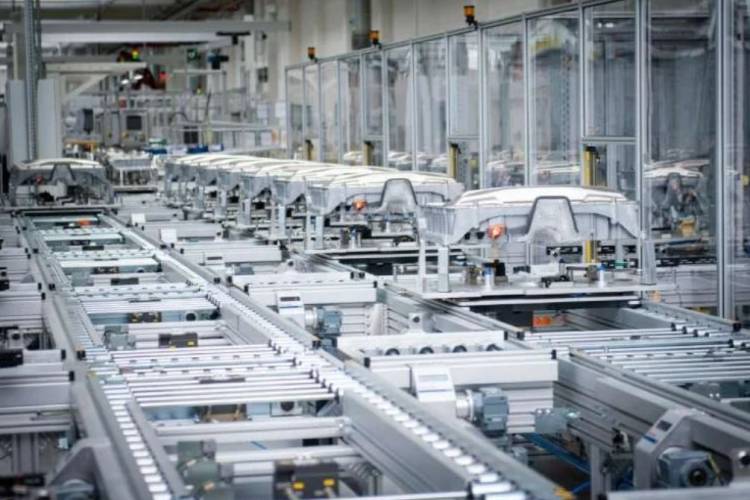The Production-Linked Incentive scheme has been credited with turbocharging mobile phone manufacturing and exports, emerging as a flagship success of the Make in India programme. Building on this momentum, the government is now planning to expand the PLI scheme under the National Programme on Advanced Chemistry Cell Battery Storage to encompass a wider array of sectors and applications. The current expansion seeks to allocate the remaining 10 GWh of the original 50 GWh target.
Launched in May 2021 with a budgetary outlay of Rs 18,100 crore, the scheme has already earmarked 40 GWh of capacity to companies such as Ola Cell Technologies, ACC Energy Storage, and Reliance New Energy Battery Storage. The ministries of heavy industries and new and renewable energy are now redirecting attention to grid-scale stationary storage and niche segments like data centres, telecom infrastructure, and power backup systems.
READ | Caste and power: Census 2027 prepares for a historic reckoning
From mobile phones to battery cells
If smartphones were the success story of PLI’s first act, the second act aims to build India’s battery manufacturing prowess. At the heart of this effort are Advanced Chemistry Cells (ACCs)—next-generation batteries that store and convert electrochemical or chemical energy into electricity. These are vital to powering electric vehicles, stabilising renewable energy grids, and reducing fossil fuel reliance.
The scheme is designed to promote local value addition—starting at 25% and rising to 60% over five years—and mandates a minimum investment of Rs 225 crore per GWh of capacity. It is also technology-agnostic, allowing participating firms to select their preferred manufacturing processes, equipment, and raw materials.
Globally, ACCs are recognised as a key frontier technology in the race to net-zero. Their relevance spans sectors from consumer electronics and solar rooftops to electric mobility and smart grids. India’s vision of achieving energy security and climate targets is closely tied to developing a robust ACC ecosystem.
The promise vs performance
However, the gap between ambition and execution is widening. Three years since the first round of PLI incentives, India’s battery manufacturing remains stuck in the slow lane. Despite commitments, major players like Reliance New Energy and Rajesh Exports have failed to begin commercial production. Ola Electric, which made high-profile announcements about its indigenously developed 4680 cell, is also yet to operationalise its facility.
As a result, the government has imposed penalties on firms for missing project milestones. According to insiders, companies have sought extensions, citing unforeseen hurdles. Reliance, for instance, reportedly requested more time to set up its EV battery plant as late as March this year.
Analysts point to a mix of factors behind the delays: stringent eligibility criteria, approval bottlenecks, slow disbursement of incentives, and persistent supply chain vulnerabilities. More fundamentally, India remains dependent on imports for critical battery minerals—especially lithium—exposing its ambitions to global commodity risks. The capital-intensive nature of battery production and a shallow domestic knowledge base add to the structural challenges.
While PLI beneficiaries have stumbled, non-subsidised players are stepping in. The Tata Group is constructing a 20 GWh gigafactory in Sanand, Gujarat. Amara Raja Group and Exide Industries—both of which were earlier applicants to the PLI programme—have begun setting up facilities for lithium-ion cell manufacturing, aimed at both mobility and storage sectors. Their progress offers a glimmer of hope and signals that with the right incentives and ecosystem, India can build a viable battery value chain.
Rethinking PLI scheme: Fix the design, empower innovators
Policymakers must now acknowledge the scheme’s limitations and respond with bold recalibrations. One of the most common industry suggestions is to increase public investment in research and development, particularly in next-generation battery chemistries. Supporting the development of low-cost materials, indigenous designs, and scalable recycling technologies is key to strengthening India’s position in this fast-moving sector.
Equally important is the urgent need to build a circular economy around batteries. Introducing targeted incentives for recycling facilities can help recover valuable materials such as lithium, nickel, and cobalt, which are crucial for manufacturing but currently sourced through expensive imports. In addition, incentivising second-life applications of batteries—such as reuse in less demanding stationary storage systems—can significantly extend the lifecycle of these high-cost assets.
Taxation policy and infrastructure development also require a rethink. Industry players have repeatedly asked for tax concessions and targeted fiscal support to develop a domestic supplier base. A robust ecosystem of tier-1 and tier-2 suppliers manufacturing cell components like electrodes, separators, and casings will be vital to scaling up battery manufacturing in India and reducing reliance on imports.
Finally, there is a strong case for introducing separate PLI schemes dedicated to the manufacturing of battery raw materials and key components such as cathodes and separators. These upstream segments are critical bottlenecks in the battery value chain. A dedicated incentive structure for raw materials can stimulate domestic production, attract investment in material innovation, and create a resilient supply chain that supports large-scale cell manufacturing.
India’s energy future hinges not just on production numbers, but on developing an integrated, future-ready battery ecosystem. The National Programme on ACC Battery Storage is a crucial step, but unless the scheme is retooled to meet on-the-ground realities, India risks ceding strategic ground in a sector vital to its green transition.

